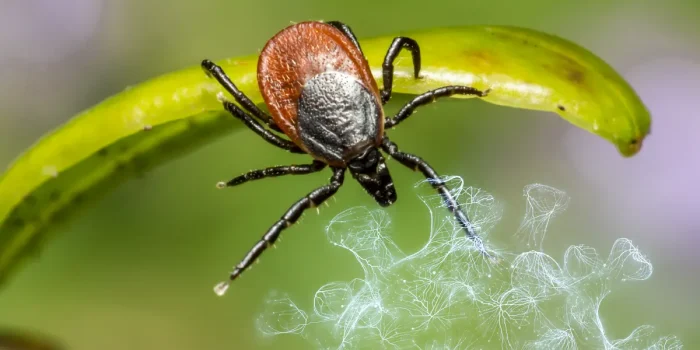Introduction
Crimean-Congo Hemorrhagic Fever (CCHF) is a high-risk zoonotic viral disease transmitted by ticks and animal contact, with serious implications for public health. While CCHF is endemic to parts of Asia, Africa, and Eastern Europe, its emergence in Greece has raised urgent questions about surveillance, environmental factors, and healthcare preparedness. The spread of this disease reflects the complex intersection of human, animal, and environmental health—making it a textbook case for applying the One Health approach.
What steps must Greece take to prevent CCHF from becoming a larger public health threat?
CCHF: A Lethal but Often Overlooked Threat
CCHF is caused by the Crimean-Congo hemorrhagic fever virus (CCHFV), a member of the Nairovirus genus. It is primarily transmitted by Hyalomma ticks, but humans can also become infected through contact with the blood or tissues of infected livestock. In healthcare settings, nosocomial infections are possible if proper precautions are not taken [1].
The disease presents initially with fever, muscle aches, and dizziness. Within days, some patients develop severe hemorrhagic symptoms including internal bleeding, liver dysfunction, and shock. The mortality rate ranges between 10% and 40%, depending on the viral strain, timeliness of diagnosis, and healthcare access. No licensed vaccine exists, and treatment is largely supportive [2].
CCHF in Greece: A Growing Concern
Greece confirmed its first indigenous case of CCHF in 2008 in the northern region of Komotini. The patient, who died from the infection, marked a turning point in national awareness [1]. Since then, researchers have detected antibodies against the virus in livestock and humans, suggesting silent circulation of CCHFV, especially in rural areas where contact with animals and ticks is frequent [3].
Moreover, the AP92 strain—a low-pathogenic variant of the virus—has been identified in Greek tick populations. Though less virulent, its presence demonstrates the need for continuous monitoring. Regions with high livestock density, wildlife interactions, and environmental changes are considered at higher risk for outbreaks [3].
Environmental and Occupational Risk Factors
The ecology of Hyalomma ticks makes them highly adaptable to the Mediterranean environment. They thrive in open, arid landscapes typical of Greek farmland and woodlands. Agricultural workers, veterinarians, butchers, and hunters are particularly vulnerable due to their exposure to infected ticks and animals [4].
Land-use changes, warming temperatures, and livestock movement across borders may all contribute to expanding the geographic range of both vectors and hosts. Greece’s proximity to endemic countries like Turkey and Bulgaria also increases cross-border transmission risk [4].
Crimean-Congo Hemorrhagic Fever in Greece: Surveillance and Response
Addressing Crimean-Congo Hemorrhagic Fever in Greece requires a unified One Health strategy that integrates human, animal, and environmental health systems. Surveillance efforts must be interdisciplinary—linking veterinary services, public health authorities, and environmental monitoring networks. Early detection of the virus in livestock through serological screening can serve as a crucial early warning system, helping to anticipate potential spillover into human populations [1].
Targeted education campaigns for farmers, agricultural workers, and rural communities are vital. These efforts should emphasize tick-bite prevention, safe handling of animals, and early recognition of CCHF symptoms. Concurrently, medical personnel need clear diagnostic protocols and training to identify and manage suspected cases effectively, reducing the risk of nosocomial infections in healthcare settings [2].
Environmental interventions are equally important. Integrated tick control strategies—including vegetation management, acaricide treatment of livestock, and habitat surveillance—can reduce the population of Hyalomma ticks, the primary vector of CCHF. Coordinated efforts among governmental bodies, research institutions, and community organizations can ensure that these measures are comprehensive and sustainable [3].
Policy, Preparedness, and Global Relevance
The Greek experience with CCHF mirrors a broader European challenge. Climate change, globalization, and increasing contact with wildlife are reshaping the landscape of zoonotic diseases. Institutions like the ECDC and WHO recommend member states strengthen vector surveillance, laboratory diagnostics, and cross-border data sharing [2, 4].
Greece has responded by updating its National Action Plan on Zoonoses and participating in regional tick-borne disease networks. The inclusion of CCHF in national and EU disease registries ensures rapid reporting and emergency response capabilities [4].
Conclusion
The emergence of Crimean-Congo Hemorrhagic Fever in Greece is a stark reminder that infectious disease threats do not recognize borders. Through robust One Health collaboration, Greece can mitigate the risk of future outbreaks while contributing to regional and global zoonotic disease preparedness.
As tick populations and human-animal interactions evolve, proactive surveillance, education, and environmental stewardship will be vital in keeping CCHF and similar diseases under control.
References
- Papa, A., Tsergouli, K., Tsioka, K., & Mirazimi, A. (2008). Crimean-Congo hemorrhagic fever in Greece: a public health perspective. International Journal of Infectious Diseases, 12(6), 653–657.
- World Health Organization. (2023). Crimean-Congo hemorrhagic fever, https://www.who.int/news-room/fact-sheets/detail/crimean-congo-haemorrhagic-fever
- Antoniadis, A., et al. (2014). Seroepidemiological study of Crimean-Congo haemorrhagic fever in Greece. Clinical Microbiology and Infection, 20(2), 216–220.
- European Centre for Disease Prevention and Control (ECDC). (2023). Crimean-Congo haemorrhagic fever, https://www.ecdc.europa.eu/en/crimean-congo-haemorrhagic-fever













